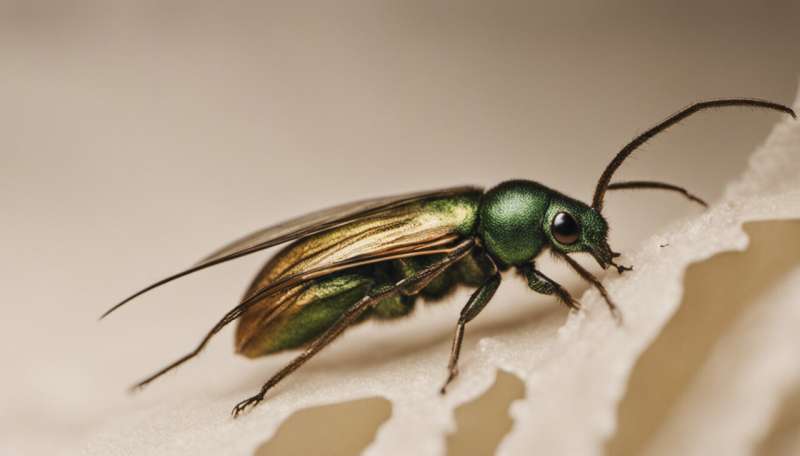How accurately can farmers identify invasive pests?

Farmers are on the frontline of Australia's agricultural biosecurity, but if an exotic pest set up shop in their crop, could they recognise it?
More than 70% of Aussie farmers and 80% of agronomists were able to identify Australia's common crop pests and diseases—stripe rust in wheat, blackleg in canola and powdery mildew in barley—according to a survey by DAFWA's Dominie Wright.
However, fewer than half of the 248 respondents could identify the Australian grain industry's top four biosecurity threats: Karnal bunt, Khapra beetle (Trogoderma granarium), barley stripe rust and Russian wheat aphid (diuraphis noxia).
In 2013/14, Australia exported $10 billion of grain, but the arrival of an exotic pest could slash yields and throw up barriers to international trade.
Karnal bunt, for example, is an easily transported fungal disease that blackens grain and stinks like dead fish.
"It's a trade barrier," says Ms Wright. "There would be major implications if it was ever to get into Australia."
Russian wheat aphid arrived in South Australia and Victoria this year; in the US, it has cut yields by up to 80%.
"People aren't sure how it will affect our crops, because it's the first time we've had it in Australia," says Ms Wright.
Identification by elimination
Respondents could more readily identify the diseases they saw more often, Ms Wright found.

For example, WA farmers did a better job identifying powdery mildew than their eastern states counterparts.
"In WA, powdery mildew has been incredibly prevalent for the last six or seven years, whereas in the eastern states they don't have it as often," says Ms Wright.
The opposite was true for stripe rust, which hadn't been seen in WA for nearly a decade when Ms Wright did her survey.
"WA growers and agronomists had forgotten what it looked like," she says.
Ms Wright hopes that if farmers can identify common pests and diseases, they'll be more likely to raise the alarm if they spot something unusual.
Shrink-wrap solutions
"If there's an outbreak of something exotic, and you get it early, you can eradicate it," Ms Wright says.
One example is the 2007 discovery of Khapra beetles in a WA home.
The beetles were unknowingly shipped from Scotland in luggage.
"The whole house was wrapped in plastic and fumigated," says Ms Wright. "It was very successful in eradicating Khapra beetle from the home."
If you do spot something unusual, ring the Exotic Plant Pest Hotline (1800 084 881) or use the free MyPest Guide reporter.
Provided by Science Network WA
This article first appeared on ScienceNetwork Western Australia a science news website based at Scitech.




















